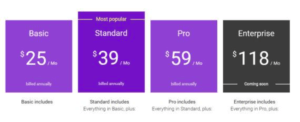As humans, we often use shortcuts to make decisions and save time. We sometimes rely on our emotions because it isn’t always efficient to take the time to logically think through every simple choice we make in a day. We have our subconscious to thank for this, and it’s used in decision making more often than you might think.
Create better #EmailMarketing campaigns with science! Share on XFor example, before creating kick ass emails became one of my daily tasks, I would only read through emails that appeared interesting to me. Anything that didn’t catch my eye within the first few seconds was launched into the trash. The decision to send these to the trash was subconscious, which is why it’s crucial to consider the effect psychology has on your targeting email marketing campaigns and marketing strategies.

Listed below are four psychological factors that affect a consumer’s decision-making process:
FOMO (Fear Of Missing Out)
Scarcity and urgency signify a limitation in the amount of some good or service. This limited availability can make people believe the product is valuable, which often triggers us to take action.
A study completed by Mailjet concluded that Britons are 39% more likely to engage with a brand if they push a message that aims to alleviate FOMO.
This happens frequently with travel booking companies. For instance, if you visit booking.com, you’ll notice there is typically a notification claiming there are only a few rooms left. You’ll also see a notification displaying how many people have booked in the last 24 hours. This creates a sense of urgency to book now before someone else beats you to it.

FOMO typically creates a level of social anxiety in a person that indicates there is some great event or experience that they are missing out on. The best way to implement this in your campaigns is to emphasize the scarcity and urgency, usually through limited availability or expiring after a certain time.
The Zeigarnik Effect
The Zeigarnik Effect states that people tend to remember and focus on uncompleted tasks more than those they’ve completed. Dr. Zeigarnik first studied this behavior after noticing that waiters could remember everything about tabs that were still open, but hardly anything about tabs that had already been paid.
This relates back to the human tendency to finish what we start. If something we’ve started is not completed, we subconsciously experience discomfort – even if the conscious mind is focused on setting new tasks and goals.

It is crucial that marketers understand the human mind’s desire for completion and closure. The best way to capitalize on this subconscious feeling is through words and messages that capitalize on this. Here are a few awesome examples:
- Website Opt-In Forms
- Email Headlines
- Banner Advertisements
Price Anchoring
The anchoring effect takes place when our mind takes an initial piece of information and bases all new information on what we first learned. That first piece of information is now acting as an anchor because it influences relevant decisions in the future.
The most common use of the anchoring effect is in sales. As pointed out by Neil Patel in an earlier Kissmetrics post on psychological tips that improve product pricing, “For example, if someone mentions “$300” in regards to a SaaS product that you are considering buying, then your mind is anchored by that number. Thus, when you see the true price — $30 — then you might think “Wow! That’s a great price!” Why? Because you were thinking $300 before”.

Using the anchoring effect in email campaigns is a relatively simple tactic. You start by showing a reference point (original price) and then the second price. If the second price is lower than the first, your subscribers will think it’s a great discount! That’s why they say the best way to sell a $2,000 watch is to put it next to a $10,000 watch.
Social Default
Social influence or acceptance is a psychological phenomenon that significantly impacts human behavior. In essence, social default is the idea that if someone else has done something and had a positive experience, we (as consumers) are more likely to buy into it.
This bandwagon effect is most often used in marketing to influence consumer behavior. If you know that a trusted friend bought something, it may cause you to place a high value on that product. The “read the reviews” section on most retail sites is the best example of this. Just by seeing that something is popular, people can be led to believe that it is valuable.
The most noticeable way this is utilized in email campaigns is by using testimonials and user ratings to validate your product or service.

These are just a few of the many psychological tactics that can be implemented to influence consumer behavior. We are an imperfect breed and there is no better time than the present to capitalize on our psychological imperfections. While marketing is an art as well as a science, understanding the way the brain the mind works is a great way to improve your marketing strategies.


